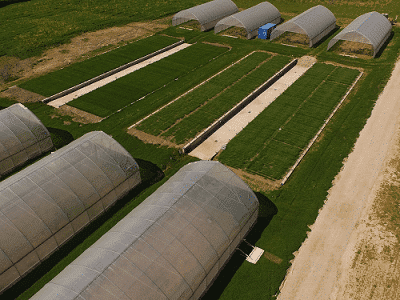
RadiMax: A Large-scale Semi-field Facility to Study Genetic Differences in Root Growth and Resources Acquisition
2DLF Seeds Research Division, DLF Seeds A/S, Denmark
Roots are vital organs for plants, and they are important for yield stability of crops through the effective use of resources from the soil below. However, genotypic variation in root traits among crop genotypes is mostly unknown. Field screening of root development, especially in deeper soil horizons, is costly and labour demanding, while in-house studies under controlled conditions may not show the relevant traits for full-scale crop development under real field conditions.
We developed a new phenotyping facility (RadiMax) at University of Copenhagen for the study of full-scale root growth and soil resource acquisition. The facility consists of 4 units each covering 400 m2 and containing 150 minirhizotrons, allowing root observation in the 0.4 m-1.8 m or 0.7 m - 2.8 m depth interval. Roots are observed using multispectral imaging, and an image analysis system for root quantification have been developed. In addition, plant rows are grown across a stress gradient created by a multi-depth sub-irrigation system and movable rainout shelters. The water stress gradient allows a direct link between root observations and the development of stress response in the canopy.
To test the concept and technical features, selected spring barley (H. vulgare L.) and perennial ryegrass (L. Perenne L.) genotypes were grown in two seasons. Genotypic differences for root growth was found, and a clear aboveground physiological response was visible along the water stress gradient. Although further technical development and field validation is ongoing, we suggest that the large-scale semi-field approach function as a stable tool for determination of genetic differences related to effective use of soil resources in deeper soil layers. This provides plant breeders and molecular biologist with a new phenotyping infrastructure to identify superior plant material in the development of robust and high yielding plant varieties for rainfed agriculture.

Powered by Eventact EMS